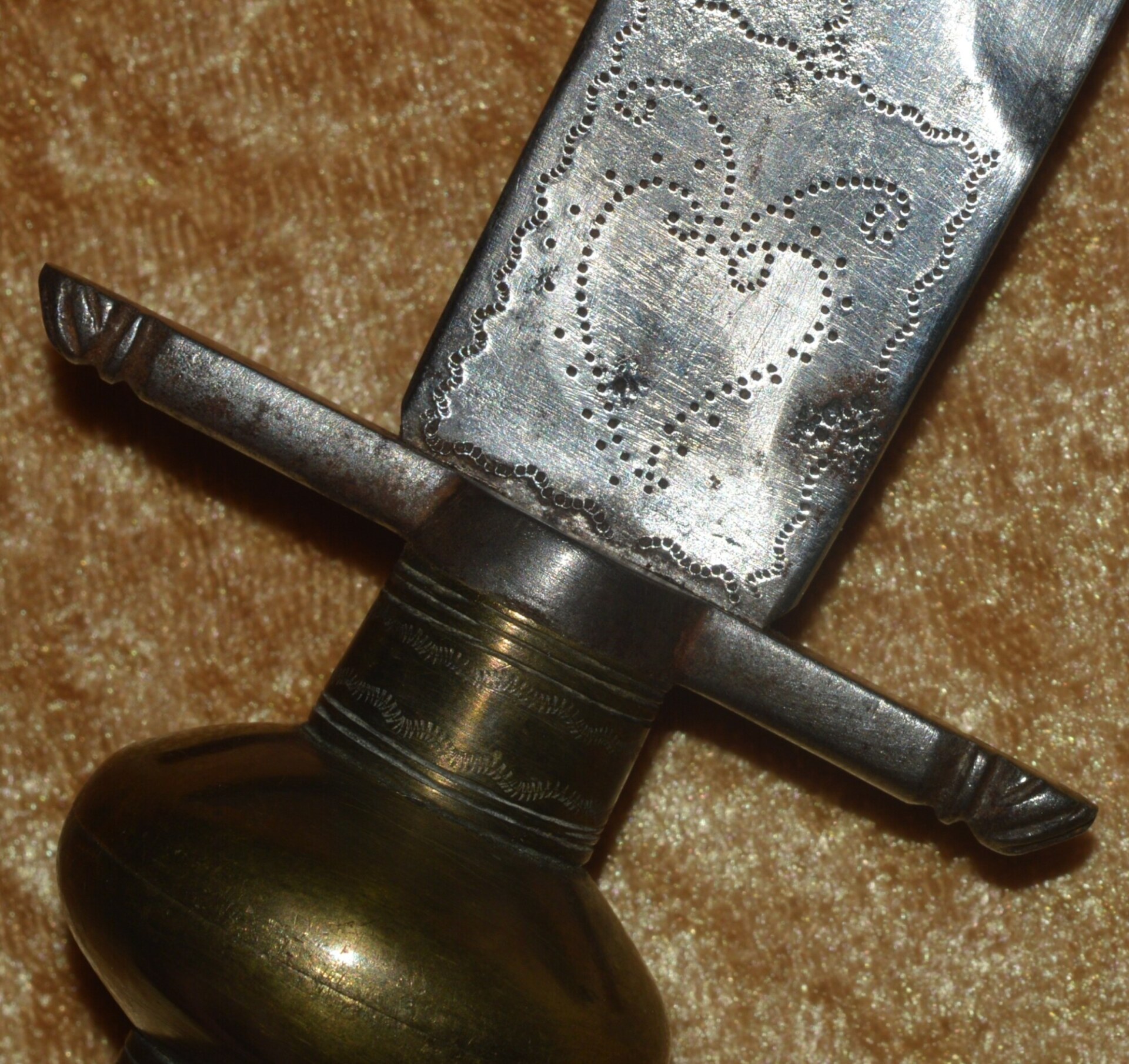Description
Featuring straight steel guard with half-round quillons. Horn grip taper with long brass
cylindrical pommel capped with a brass washer and brass grip swell at the base. Single-
edged 7 3/4″ blade, broadening slightly from the ricasso before gradually sweeping toward
the double-edged point, and featuring a decoration of wrigglework and hearts formed by a
series of tiny punched dots. Original brown velvet scabbard with brass chape and throat
decorated with incised lines and geometric designs. Blade with small patches of pitting;
horn grip with chipping near the pommel; brass with dark patina. Typical work of the town
of Albacete in the old Murcia Province of Southeastern Spain. Overall length 13 3/8″, not
including scabbard.
Though probably originating around 1550, the plug bayonet had a relatively short span of
use from around 1650-1720 (except in Spain where they were used to the end of the19th
C). Their rise in popularity largely paralleled the development of standing armies in
Europe, which were realizing the importance of the musketeer, while at the same time not
wanting to wholly abandon the pike. In this sense the plug bayonet can be considered a
transitional weapon. However, despite its use as a dagger on its own, it was soon found to
be impractical since it’s use prevented the musket from being fired. Countless soldiers
also found great difficulties in removing a stuck plug bayonet from the muzzle, rendering
the musket useless as a firearm. Many were damaged while being removed and as a
result relatively few survive. For these reasons it was soon superseded by the socket
bayonet, which did not affect the musket’s ability to fire and could much more easily be
removed.











 US M1840 Foot Officer’s Sword
US M1840 Foot Officer’s Sword  German Hunting Sword, 19th C
German Hunting Sword, 19th C  Chiselled And Gilt Smallsword, Probably French, 18th Century
Chiselled And Gilt Smallsword, Probably French, 18th Century  WWII Nazi German Army Heer Officer’s Dove Head Sword
WWII Nazi German Army Heer Officer’s Dove Head Sword